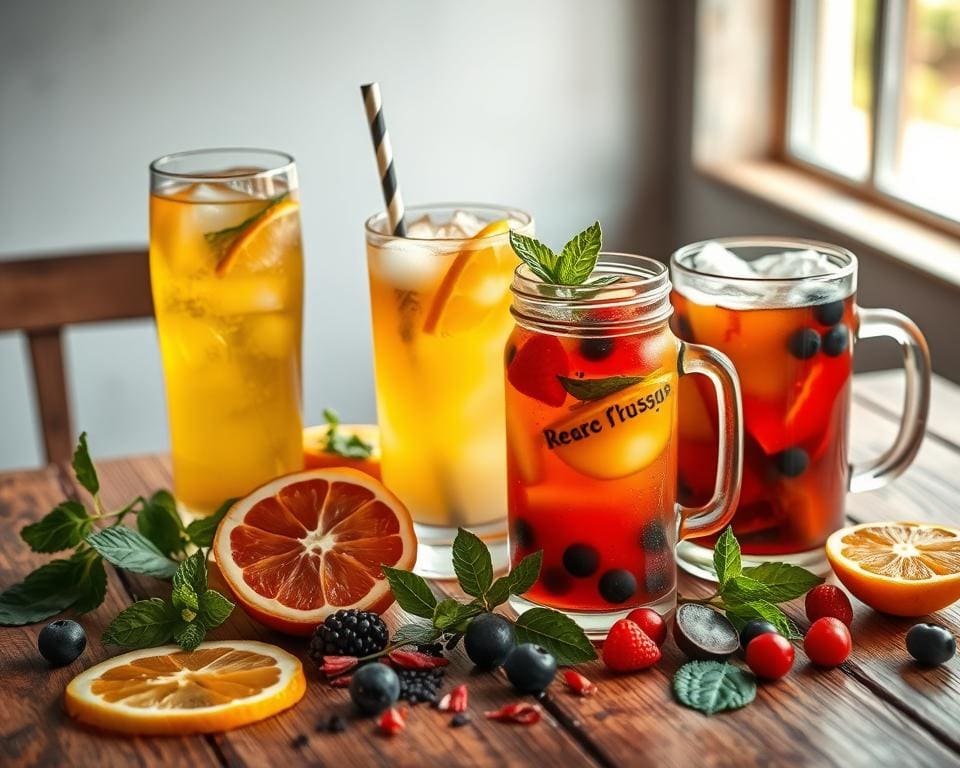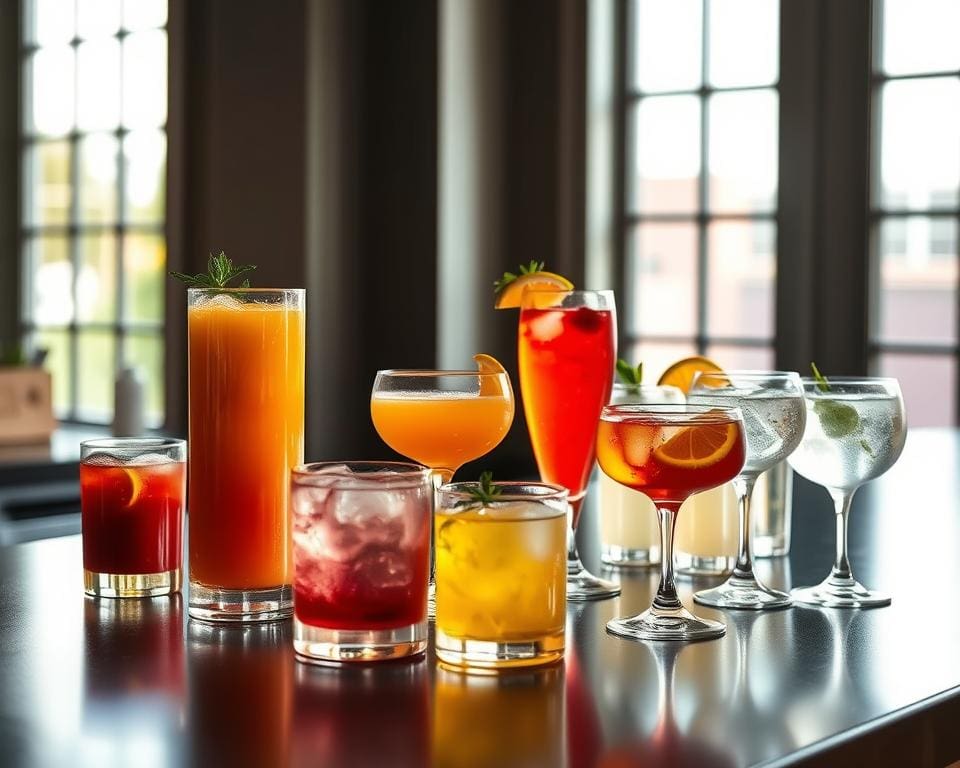In recent years, the demand for alcohol-free drinks has surged, leading many to ponder a crucial question: why are alcohol free drinks so expensive? This growing trend reflects a significant shift in consumer behaviours within the beverage industry, emphasising health-conscious choices and social inclusivity. As more brands enter the market and innovate their offerings, premium pricing seems to become the norm. Understanding the underlying reasons for these costs not only sheds light on market dynamics but also opens a dialogue about consumer perception and the intricacies of manufacturing in this evolving sector.
Introduction to Alcohol-Free Drinks
In recent years, alcohol-free drinks have transformed the landscape of social drinking. The market introduction of non-alcoholic beverages has met a growing demand for options that cater to conscious consumers. These products not only provide an alternative to traditional alcoholic drinks but also offer potential health benefits.
Brands like Heineken 0.0 and Seedlip are leading the charge, showcasing that alcohol-free does not mean flavour-free. These quality alternatives highlight the shift in social norms, encouraging a culture where non-alcoholic options are celebrated rather than relegated to the sidelines. Consumers are increasingly seeking innovative flavour profiles, prompting companies to expand their offerings.
The range of alcohol-free drinks available today is diverse, including tantalising alcohol-free beers and sophisticated non-alcoholic spirits. Each product is designed to deliver an experience that captures the essence of its alcoholic counterpart, appealing to a wide audience. This introduction of varied products marks a significant step in creating a vibrant sector within the beverage industry.

Market Trends in Non-Alcoholic Beverages
The non-alcoholic beverages sector is experiencing unprecedented growth, shaped by dynamic market trends. Research from organisations such as Nielsen and IWSR illustrates the expanding demand for these products, indicating a shift towards health-conscious options. As consumer trends evolve, demographics are shifting to encompass a broader audience, including younger generations who prioritise well-being and mindful consumption.
Social media plays a vital role in driving beverage industry trends, with influencers championing alcohol-free alternatives. This exposure has opened doors for brands to innovate, crafting unique flavours and engaging marketing campaigns that capture attention. The rise in product variety caters to diverse tastes, enabling consumers to explore exciting non-alcoholic options.
Brands recognise the importance of aligning with consumer preferences, leading to a surge in collaborations and limited-edition releases. This responsiveness to market trends not only enhances brand visibility but also fosters a deeper connection with consumers. As a result, the non-alcoholic beverage landscape is rapidly transforming, driven by innovation and a commitment to health-focused living.
Why Are Alcohol Free Drinks So Expensive
Understanding the true costs behind alcohol-free drinks is essential for discerning consumers. Several pricing factors contribute to the premium placed on these beverages. This section will explore the various elements that influence alcohol-free drinks pricing and how they compare to traditional alcoholic beverages.
Factors Influencing Pricing
The pricing of alcohol-free drinks often stems from multiple influences, including:
- Production scale: Many alcohol-free brands operate on a smaller scale compared to established alcoholic beverage manufacturers, which can lead to higher costs per unit.
- Ingredient quality: Premium ingredients are frequently used in crafting these drinks to ensure rich flavours and appealing aesthetics, raising production expenses.
- Innovative techniques: Advanced methods, such as reverse osmosis or vacuum distillation, are often employed to create the desired taste profile, thereby increasing production costs.
Comparing with Traditional Alcoholic Beverages
A thorough price comparison between alcohol-free and alcoholic beverages reveals significant discrepancies influenced by several factors:
- Taxes and regulations: Alcoholic beverages are often laden with hefty taxes and regulations which can profoundly impact pricing; alcohol-free alternatives are usually exempt from such burdens.
- Market supply: The supply chain for alcoholic beverages is well-established, generating cost efficiencies that may not yet apply to alcohol-free drinks.
- Consumer demand: Increased interest in health-conscious choices may lead to scarce supply for alcohol-free drinks, thus driving prices higher.
Consumer Perception of Alcohol-Free Drinks
Understanding consumer perception is essential for grasping the market dynamics surrounding alcohol-free drinks. As the popularity of these beverages continues to grow, studies reveal a shift in consumer behaviour towards valuing quality and health benefits associated with non-alcoholic alternatives. Many individuals now consider alcohol-free drinks not just as substitutes but as premium products deserving of higher prices.
Survey findings suggest that consumers are increasingly aware of the benefits of alcohol-free options, associating them with a healthy lifestyle and positive social experiences. This evolving market perception influences their willingness to invest in premium alcohol-free options, driven by a desire for inclusivity in social settings while maintaining personal health goals.
Moreover, societal stereotypes about non-drinkers are gradually changing. Brands are adapting their marketing strategies to reflect the diverse motivations of consumers. This resurgence of interest in alcohol-free drinks highlights the critical role of consumer perception in shaping product offerings and driving innovation within the industry.
Manufacturing Costs in the Beverage Industry
The manufacturing realm of alcohol-free drinks is intricate, with several factors contributing to the higher costs seen in the market. Understanding the nuances of these manufacturing costs reveals the dedication and effort that brands invest in crafting quality products.
Ingredients and Production Techniques
Sourcing high-quality ingredients significantly impacts beverage industry costs. Many brands opt for natural, organic components to appeal to health-conscious consumers. This commitment often leads to elevated procurement costs. In addition to sourcing, innovative production techniques play a pivotal role in producing alcohol-free beverages. Brands often employ complex fermentation processes or utilise advanced flavour extraction methods to create appealing taste profiles. These production techniques require specialised equipment and skilled labour, further driving up manufacturing costs.
Packaging and Branding Expenses
In a crowded market, effective packaging and branding are essential for standing out. The expenses associated with creating eye-catching, sustainable packaging contribute to the overall manufacturing costs. Brands frequently invest in unique bottle designs and eco-friendly materials, enhancing consumer perception while elevating packaging expenses. This focus on branding not only appeals to aesthetics but underscores the commitment to quality and sustainability, which consumers increasingly value.
Pricing Trends in Alcohol-Free Beverages
The alcohol-free beverage market has witnessed significant transformation in recent years, reflecting changing consumer preferences and new market dynamics. Pricing trends have evolved substantially as brands strive to establish their identity within this competitive realm. A comprehensive pricing analysis reveals that these beverages often command higher prices compared to traditional options, attributed to the unique production methods and quality ingredients involved.
Competitive pricing strategies play a crucial role in influencing market pricing. As more brands enter the alcohol-free segment, consumer choice expands, prompting companies to adjust their pricing in response. Seasonal variations, such as holidays and summer months, further influence pricing strategies, with many brands introducing promotional campaigns to boost sales during peak times.
The growth of alcohol-free beverages has led to an increasing demand for innovative products. As brands experiment with flavours and formulations, they reflect this creativity in their pricing models. The interplay between supply chain factors and marketing initiatives informs the overall pricing trends within this burgeoning sector.
The Role of Distribution in Pricing
The distribution role plays a crucial part in determining the pricing of alcohol-free drinks. Understanding how products reach consumers is essential for evaluating their final costs. Various factors contribute to pricing, including logistical costs and retail markups, which impact the overall consumer experience.
Logistical Costs
Transporting alcohol-free beverages involves significant logistical costs. Factors affecting these costs include:
- Transportation methods
- Distance from production to retail
- Storage requirements
- Supply chain efficiency
Each element in the supply chain can influence the final price that consumers encounter. Companies striving to maintain quality while managing these expenses face an ongoing challenge, affecting not just logistics but also the overall pricing strategies they adopt.
Retail Markups and Pricing Strategies
Retail markups for alcohol-free drinks can differ notably from traditional beverages. Factors influencing these markups include:
- Consumer demand and market trends
- Brand positioning and marketing efforts
- Competitive pricing strategies
Effective pricing strategies play a vital role in maximizing profits while remaining appealing to customers. Retailers must navigate these dynamics carefully, balancing quality and affordability to cultivate a loyal customer base. In this complex landscape, understanding the distribution role becomes paramount in shaping both product availability and pricing efficacy.
Future of Alcohol-Free Drinks in the Market
The alcohol-free drinks market is poised for exciting developments as consumer preferences continue to evolve. With a growing emphasis on health and well-being, future trends indicate that demand for non-alcoholic options will surge, driven by younger generations seeking sophisticated alternatives. Market predictions suggest that as the stigma around abstaining from alcohol diminishes, more brands will emerge, offering innovative beverages that indulge sophisticated palates without the alcohol.
As the industry outlook stabilises, we can expect to see advancements in production techniques and flavour profiles. Innovations may lead to the launch of premium alcohol-free spirits and craft beers that challenge traditional perceptions of these beverages. The introduction of more experimental ingredients, such as adaptogens and botanicals, will likely elevate the alcohol-free experience, drawing in even more consumers looking for luxurious alternatives.
Additionally, as sustainability trends gain momentum, ethical sourcing and eco-friendly packaging will become pivotal considerations within the alcohol-free drinks market. This shift will not only appeal to environmentally conscious consumers but will also influence pricing strategies, ensuring that affordability can coexist with quality. The future of alcohol-free beverages looks promising, filled with opportunities for innovation and consumer engagement in an ever-changing market landscape.









